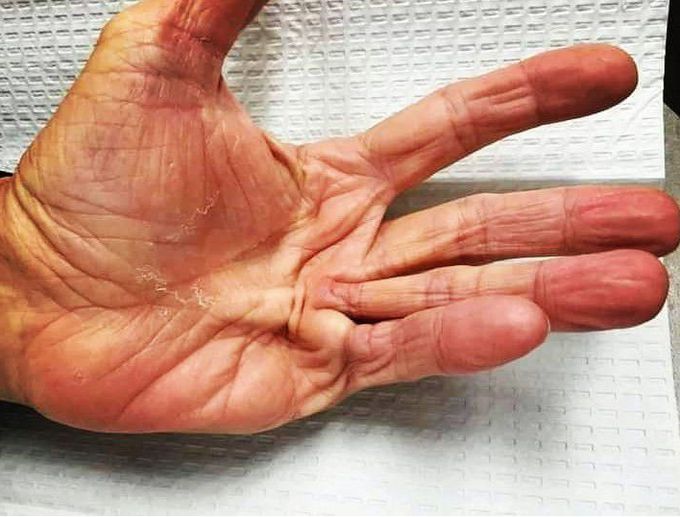


Dupuytren's Contracture
Dupuytren's contracture is a hand deformity that can develop over the years.It causes connective tissue (fascia) under the skin of the palm to thicken and become scar-like. As a result knots of tissue form under the skin eventually creating a thick cord that can pull one or more fingers into a bent position. The affected fingers can't be straightened completely, which can complicate everyday activities to a great extent. CAUSE: The cause of this scar tissue formation is still unknown. However, genetic roots have been discovered. SYMPTOMS: At first, the skin on the palm of the hand starts to thicken. The skin might appear puckered as nodules of hard tissue begin to form in the fascia of the palm. These nodules might feel tender to the touch, but they’re usually painless. The thickening of the skin usually happens very slowly. The nodules of tissue on the palm gradually stretch into thin bands of collagen. These collagen bands progressively extend up, usually into the ring and pinky fingers. As the bands tighten, they pull the fingers in toward the palm and make it difficult to straighten out the fingers. Although fingers on both hands can be affected, one hand is usually worse than the other. DIAGNOSIS: A 'table top test' is employed to determine any existing thickened scar tissue and seeing whether the patient's fingers pull inward. TREATMENT: Corticosteroid injections can help ease pain and inflammation, and may slow down the development of the disease. Doctors can also inject enzymes into the palm to weaken the collagen bands. Then the hand is moved by the doctor until the bands are broken and your fingers can be straightened. Other than that needle aponeurotomy and Radiation therapy are also used. In case of severity surgical procedure is employed. During the procedure, the surgeon removes the thickened tissue in the patient's palm, which allows the fingers to move again. Surgery can usually give normal movement back, but risks may include infection and nerve damage. Credits: https://www.instagram.com/p/CLd-D-tBgTk/?igshid=1cfll0tiwii7t https://www.webmd.com/arthritis/ss/slideshow-treatment
Medial part of palamar aponeurosis thickens undergo fibrotic changes leading inability of ring middle finger to flex

